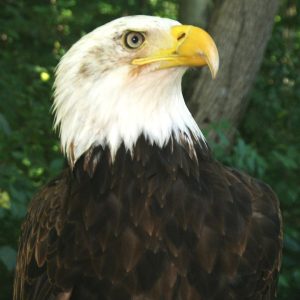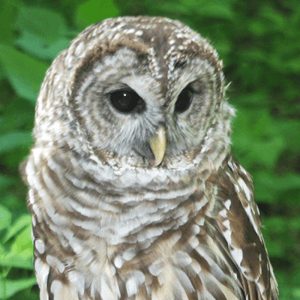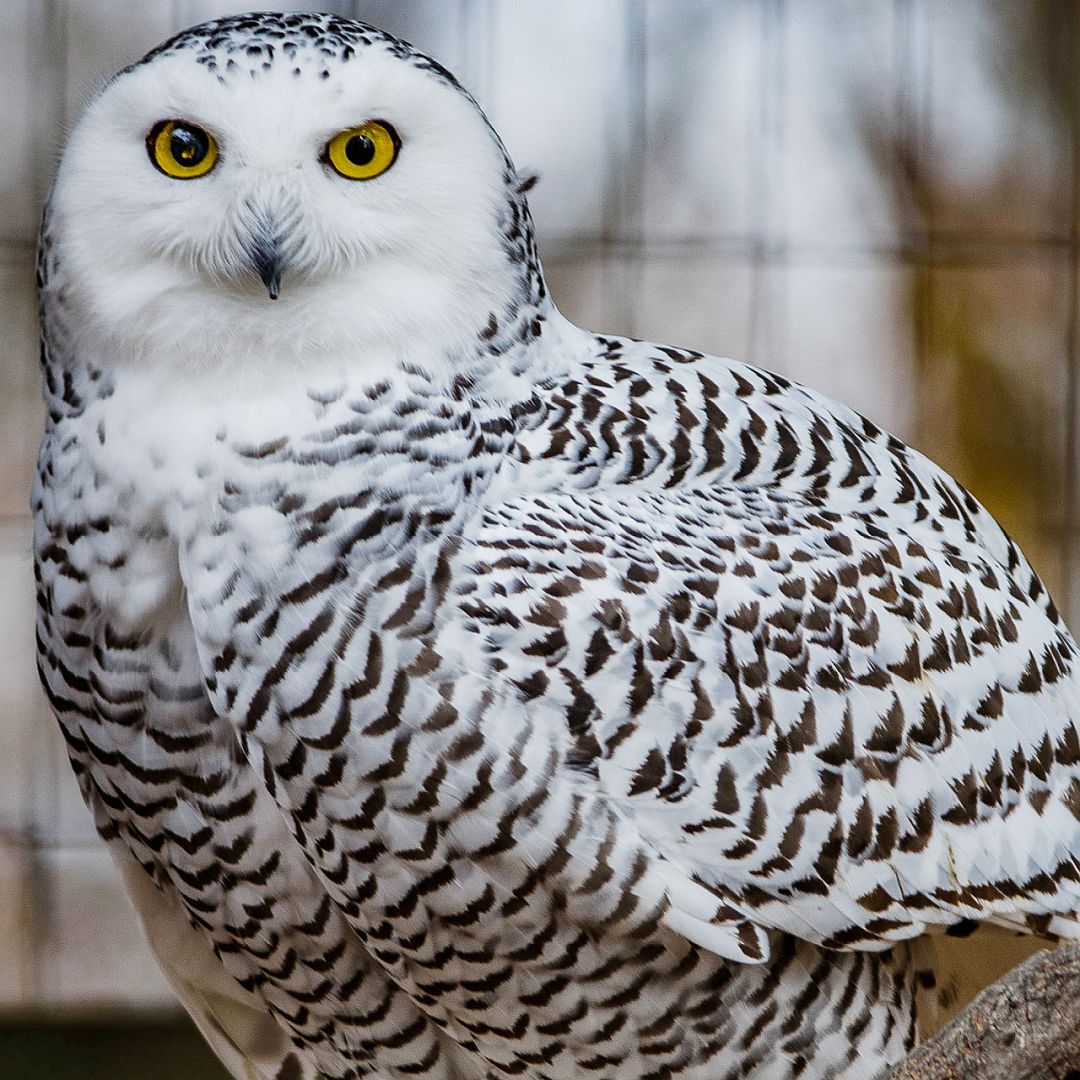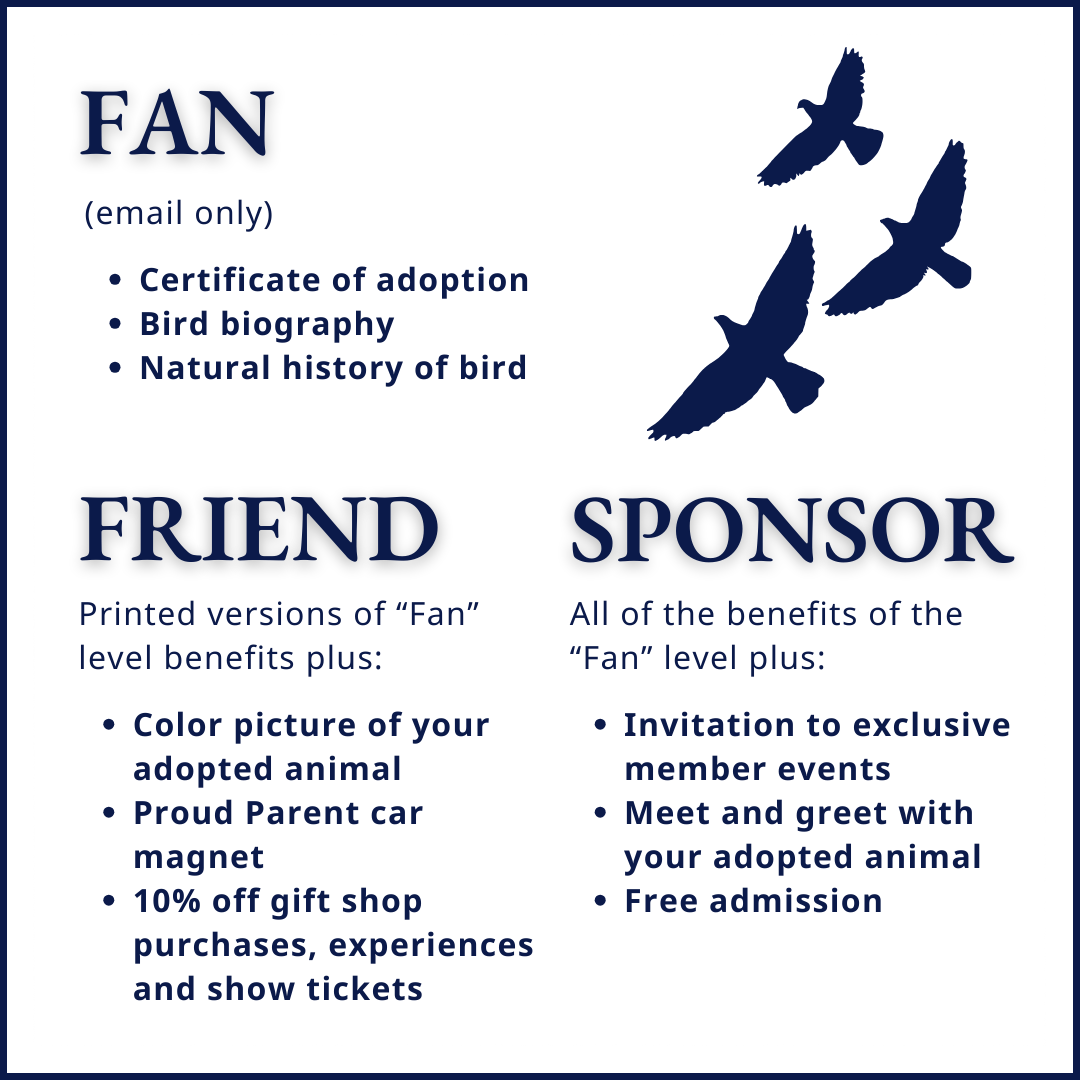Snowy Owl – Crystal
Crystal was transferred to World Bird in March of 2012 from the Milford Nature Center in Kansas after being treated for collision injuries. She was found with a humeral fracture in her right wing, as well as severe damage to her right eye. While her wing was able to heal, Crystal has a detached retina in her right eye and as such does not have any vision left on that side. You can often see the difference in size between the two pupils no matter the light conditions. Due to this loss of vision she was deemed non-releasable and was transferred to us for permanent placement.
$29.00 – $129.00
Description
HATCH YEAR: UNKNOWN
FUN FACTS ABOUT CRYSTAL
- Crystal is housed in the exhibit area located behind our Raptique Gift Shop in the fall and winter. When it gets too warm outside for her, she is moved off exhibit into an air conditioned building at our Education Training Center. A far better fit for this arctic species than a St. Louis summer!
- She enjoys people watching from her favorite front perch in her exhibit, but prefers for her caregivers not to look directly at her while in her exhibit because it tends to make her nervous.
SPECIES FACTS
Scientific Name:
- Bubo scandiacus.
Distribution:
- Arctic regions of the old and new worlds; highly nomadic, depending on the lemming and vole population; cyclical appearance in southern Canada and northern U.S. approximately every 3-5 years coinciding with lemming population crashes.
Habitat:
- The Arctic tundra or open grasslands and fields; windswept tundra when wintering in the Arctic; agricultural areas at more southerly latitudes.
Diet:
- Mostly lemmings and voles; opportunistic and known to take prey ranging in size from small mammals and birds up to and including snowshoe hares; adult owl may eat around 3-5 lemmings per day.
Behavior:
- Courtship behavior includes aerial displays and ground displays, including feeding the female; nests almost exclusively on the ground; nests lined with vegetation and Owl feathers; breeding in May; 5 to as many as 14 eggs are laid, depending on lemming availability; female incubates; eggs hatch in 32-34 days; young leave the nest after 25 days; fledge at 50-60 days; both parents feed young.
Identification:
- Snowy Owls are very large owls with smoothly rounded heads and no ear tufts. The body is bulky, with dense feathering on the legs that makes the bird look wide at the base when sitting on the ground. Eyes are bright yellow.
- Coloration is white with varying amounts of black or brown markings on the body and wings. On females this can be quite dense, giving the bird a salt-and-pepper look. Males tend to be paler and become whiter as they age.
Additional information
| Adoption Level | Fan, Friend, Sponsor |
|---|
Related products
-

Bald Eagle – Lewis
$29.00 – $129.00 Select options This product has multiple variants. The options may be chosen on the product page -

Barred Owl – Shakespeare
$29.00 – $129.00 Select options This product has multiple variants. The options may be chosen on the product page




